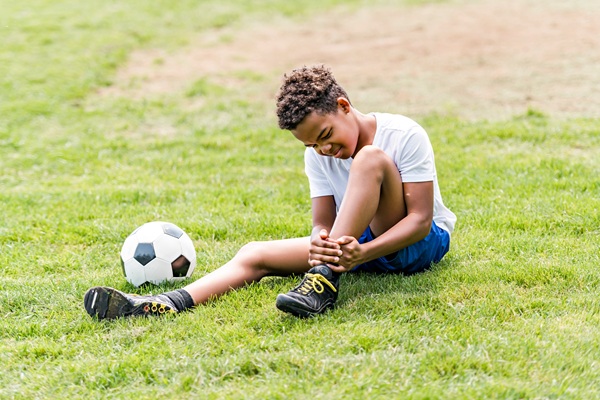Common Treatments for Children’s Sports Injuries

Children’s participation in sports provides valuable physical, emotional, and social benefits, but it can also lead to injuries. However, when children's sports injuries happen, a pediatrician can treat them promptly. Not only do they help restore patient comfort, but they also help your child get back to the sport they love quickly and safely.
Common children’s sports injuries
Children’s sports injuries commonly involve the musculoskeletal system and may result from overuse, poor technique, inadequate warm-up, or direct trauma during play. Some injuries occur suddenly, while others develop gradually over time.
Among the most frequent injuries are sprains and strains. A sprain involves the overstretching or tearing of ligaments, while a strain affects muscles or tendons. Ankles, knees, and wrists are particularly susceptible to sprains in young athletes. Meanwhile, muscle strains often affect the hamstrings, calves, or lower back.
Fractures are also relatively common in youth sports, especially in contact sports or activities with a risk of falling. These may range from hairline cracks to complete breaks in the bone. These children’s sports injuries may involve the growth plates, which are areas of developing tissue near the ends of long bones.
Other common children’s sports injuries include dislocations, tendonitis, shin splints, and concussions. Each type of injury varies in severity and recovery time. That is why it is important to have a pediatrician evaluate the injury to access safe and proper care.
Treatments for children’s sports injuries
Treatment for children’s sports injuries depends on the type and severity of the injury. In most cases, non-surgical interventions are effective and promote full recovery. The main goals of treatment are to relieve pain, reduce inflammation, promote healing, and restore function. Here are three common non-invasive approaches to treating children’s sports injuries:
The RICE method
One of the most commonly used methods for treating minor sports injuries is the RICE method, which stands for rest, ice, compression, and elevation. This approach is particularly effective for managing sprains, strains, and other soft tissue injuries during the first 24 to 72 hours following the incident. However, while RICE therapy is a first-line response for many injuries, it should be applied in conjunction with an evaluation by a pediatrician to rule out more serious conditions such as fractures or ligament tears.
Immobilization
For fractures, severe sprains, or joint dislocations, immobilization may be necessary to stabilize the injured area and promote proper healing. A pediatrician may provide splints, casts, braces, or slings to aid in immobilizing the injured area.
How long the injured area needs to be immobilized depends on its location, type, and severity. The child’s age also factors in. Growth plate fractures, for example, require careful monitoring to avoid long-term complications that could affect bone development. Regular follow-up visits help ensure proper alignment and healing.
Physical therapy
A pediatrician may refer the patient to physical therapy once the acute phase of healing is complete. There, the therapist will teach guided exercises and targeted stretches to help restore strength, flexibility, coordination, and range of motion. They work in conjunction with the pediatrician so that the patient can safely return to their sport of choice without risking immediate re-injury.
Supporting your child’s recovery
There are many types of children’s sports injuries, and pediatricians tailor care accordingly. At TKZ Pediatrics, we strive to get your child back to their sport as soon and as safely as possible. Contact us today for an appointment.
Request an appointment here: https://www.tkzpediatrics.com or call TKZ Pediatrics at (225) 420-1549 for an appointment in our Zachary office.
Check out what others are saying about our services on Yelp: Children's Sports Injuries in Zachary, LA.
Related Posts
Same-day acute pediatric care provides families with fast access to medical attention when sudden illnesses or injuries arise. Rather than waiting for an available appointment or visiting the emergency room, parents can bring their child to a pediatrician who offers same-day care for non-life-threatening concerns. In this way, children can conveniently access effective treatment that…
Pediatric asthma affects breathing, sleep, school performance, and family routines. Early diagnosis and consistent management improve control and reduce the need for urgent visits. A pediatrician tailors therapy to symptoms, triggers, and growth patterns. With the right plan, pediatric asthma can remain manageable, allowing kids to stay active.Asthma symptoms often flare when children encounter allergens,…
A kids doctor and a family doctor both care for children, but their training, focus, and daily routines differ in important ways. Understanding these differences helps families choose the right first step for each stage of life. The best choice depends on the child's age, health needs, and the family's preference for convenience or specialized…
Suture removal for kids is an important part of the healing process after an injury that required stitches. Parents often wonder what to expect during this appointment, and understanding the process can ease concerns while ensuring the best care for the child. Since each case is different, the timing and approach will depend on the…
